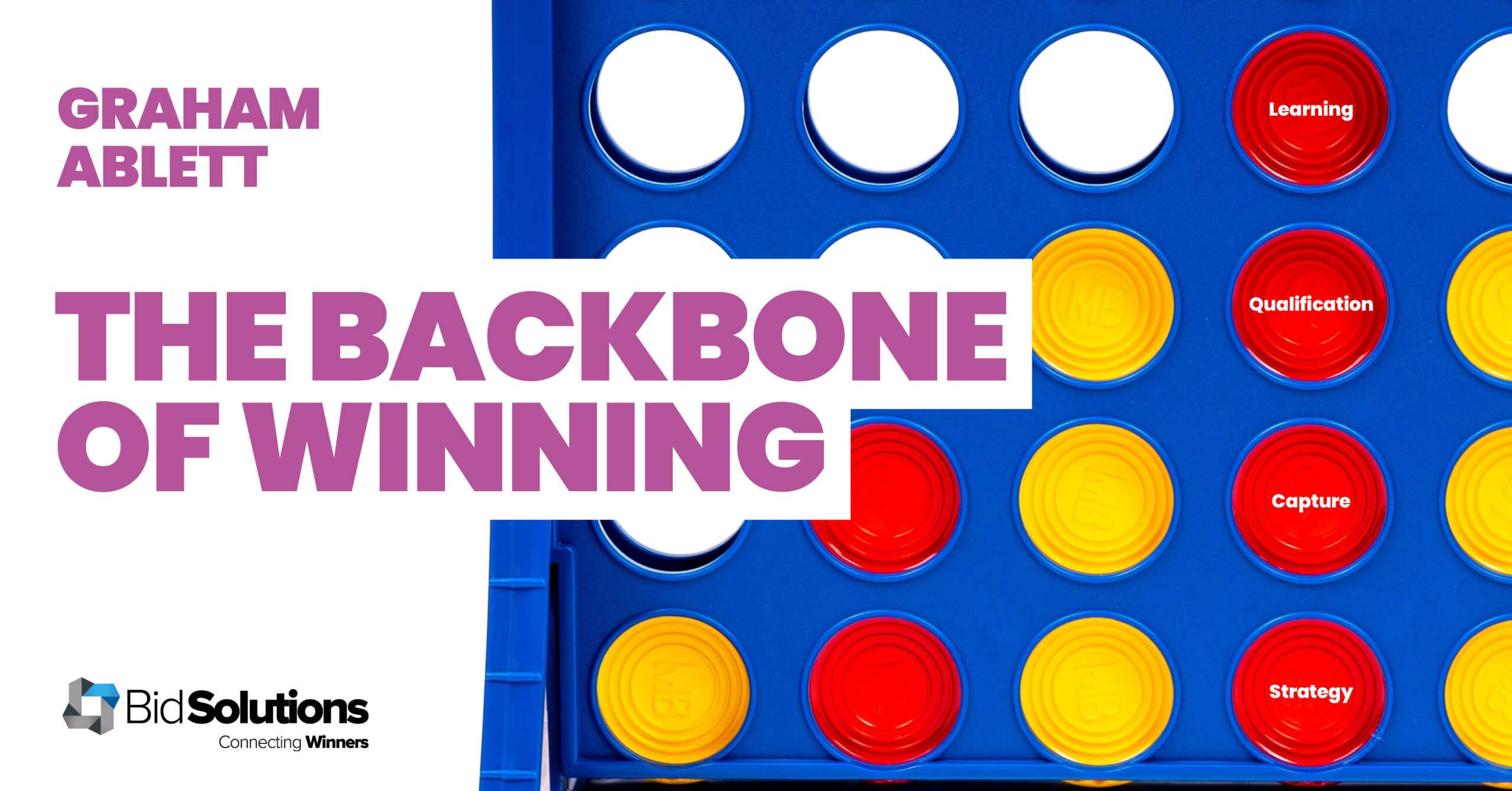
Bidding is a complex and dynamic process requiring a strategic approach and a keen awareness of the factors influencing the outcome. One of the keys to winning more is to understand the connections between the distinct phases of the Bid Lifecycle, from capturing opportunities to learning from feedback. These phases are like the vertebrae of a backbone: the stronger they are and the better they work together, the more resilient and effective your bid strategy will be. In this article, we will explore the four main influencers on success and how they relate to each other: capture, qualification, strategy, and learning reviews.
Learning: let’s start at the end…of previous deals. It’s crucial that whatever process you go through, you end up with the reasons behind the result: themes, value proposition, quality/pricing scores versus the competition’s performance (where provided) and what key things you did that impacted the result (good and bad). Storing these factors in a structured way creates a goldmine of snippets that will create a stronger connection with the next step: capture. Remember, lessons learned not lessons filed.
Qualification: let’s not waste our time here. Let’s filter out the ‘no chance’ deals by qualifying early. Insights from learning are invaluable to keeping your qualification criteria relevant. This is not just a gate process. Qualification should be an on-going activity that assesses your win chances in near real-time, i.e. it becomes active. To do this you need know what makes a winning deal, then you assess (continuously) how far away you are from those winning characteristics. Input from learning can fast-track filling gaps you might have, leaving you to prioritise what needs to be done. Whatever they are, they should find themselves in your capture plan.
Capture: The output from qualification and learning strengthens the starting point for your capture plan and tactics. They focus you on the right areas and prevent you from re-inventing the wheel by selecting tactics that work. So less backbreaking work trying things out. More picking the right path to take from your back catalogue of options captured from other teams’ learnings. The information taken from learning and qualification also ignites your price-to-compete process…which recently helped a client of ours save hundreds of thousands of pounds in bid costs.
Strategy: Your strategy points your capture plan in the right direction: defining the conditions required to win. Part of that is your proposal strategy – ensuring you are ready to embark on a journey that showcases your knowledge of the customer, your story for them, your value proposition, your win themes and your solution. The basis for getting there is understanding the underlying hot buttons. Interlocking your strategy with the other stages will help you find them and enable you to create something that’s tailored to your customer.
Connecting these dots will give your bid the strong backbone needed for success.
This article was written by Graham Ablett.
Graham Ablett is a Consulting Director at Strategic Proposals, where he helps clients to win specific opportunities as well as implementing effective and efficient proposal processes. He is a former board member of APMP in the UK, holding APMP Professional status, and is an APMP Approved Trainer.

